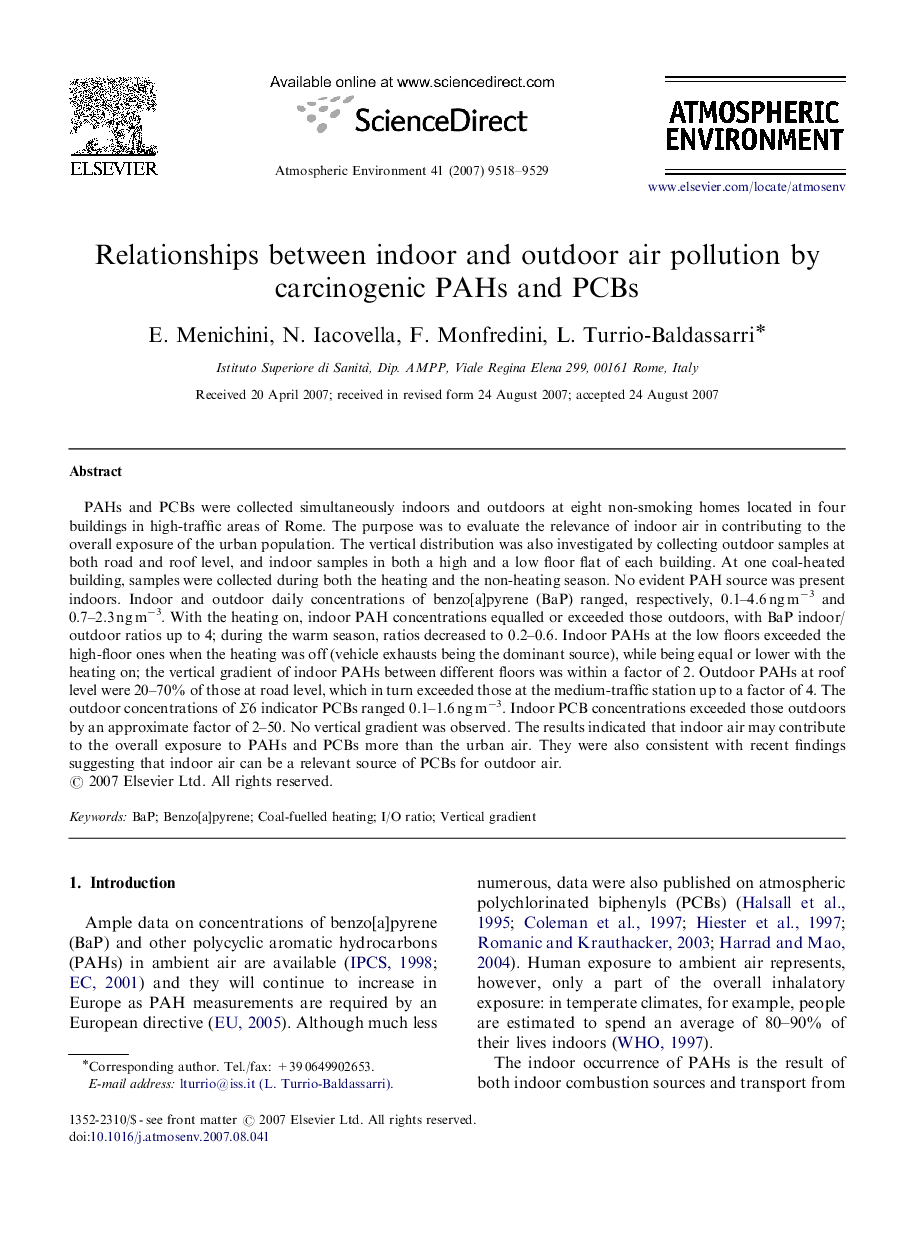| Article ID | Journal | Published Year | Pages | File Type |
|---|---|---|---|---|
| 4442887 | Atmospheric Environment | 2007 | 12 Pages |
PAHs and PCBs were collected simultaneously indoors and outdoors at eight non-smoking homes located in four buildings in high-traffic areas of Rome. The purpose was to evaluate the relevance of indoor air in contributing to the overall exposure of the urban population. The vertical distribution was also investigated by collecting outdoor samples at both road and roof level, and indoor samples in both a high and a low floor flat of each building. At one coal-heated building, samples were collected during both the heating and the non-heating season. No evident PAH source was present indoors. Indoor and outdoor daily concentrations of benzo[a]pyrene (BaP) ranged, respectively, 0.1–4.6 ng m−3 and 0.7–2.3 ng m−3. With the heating on, indoor PAH concentrations equalled or exceeded those outdoors, with BaP indoor/outdoor ratios up to 4; during the warm season, ratios decreased to 0.2–0.6. Indoor PAHs at the low floors exceeded the high-floor ones when the heating was off (vehicle exhausts being the dominant source), while being equal or lower with the heating on; the vertical gradient of indoor PAHs between different floors was within a factor of 2. Outdoor PAHs at roof level were 20–70% of those at road level, which in turn exceeded those at the medium-traffic station up to a factor of 4. The outdoor concentrations of Σ6 indicator PCBs ranged 0.1–1.6 ng m−3. Indoor PCB concentrations exceeded those outdoors by an approximate factor of 2–50. No vertical gradient was observed. The results indicated that indoor air may contribute to the overall exposure to PAHs and PCBs more than the urban air. They were also consistent with recent findings suggesting that indoor air can be a relevant source of PCBs for outdoor air.
